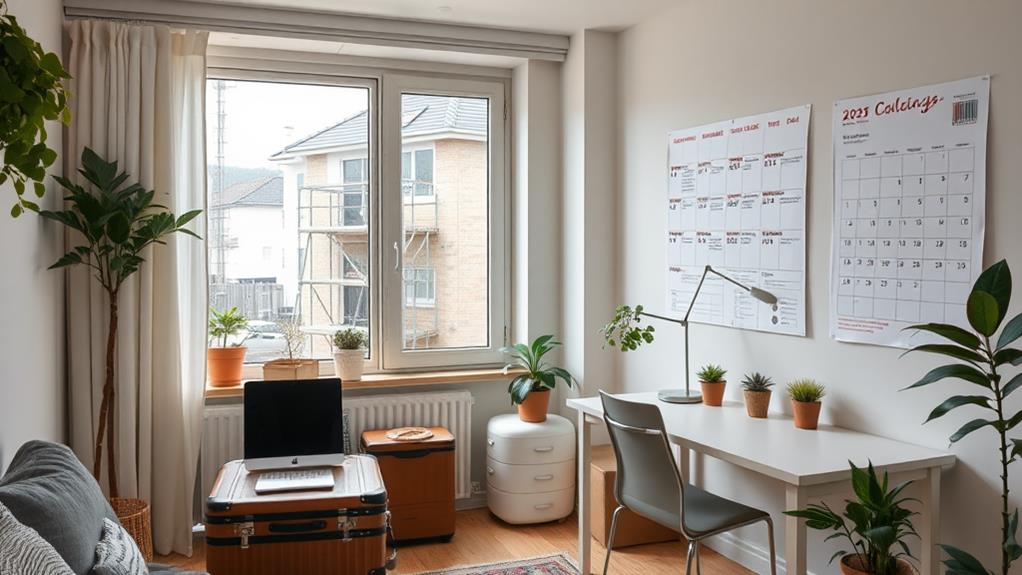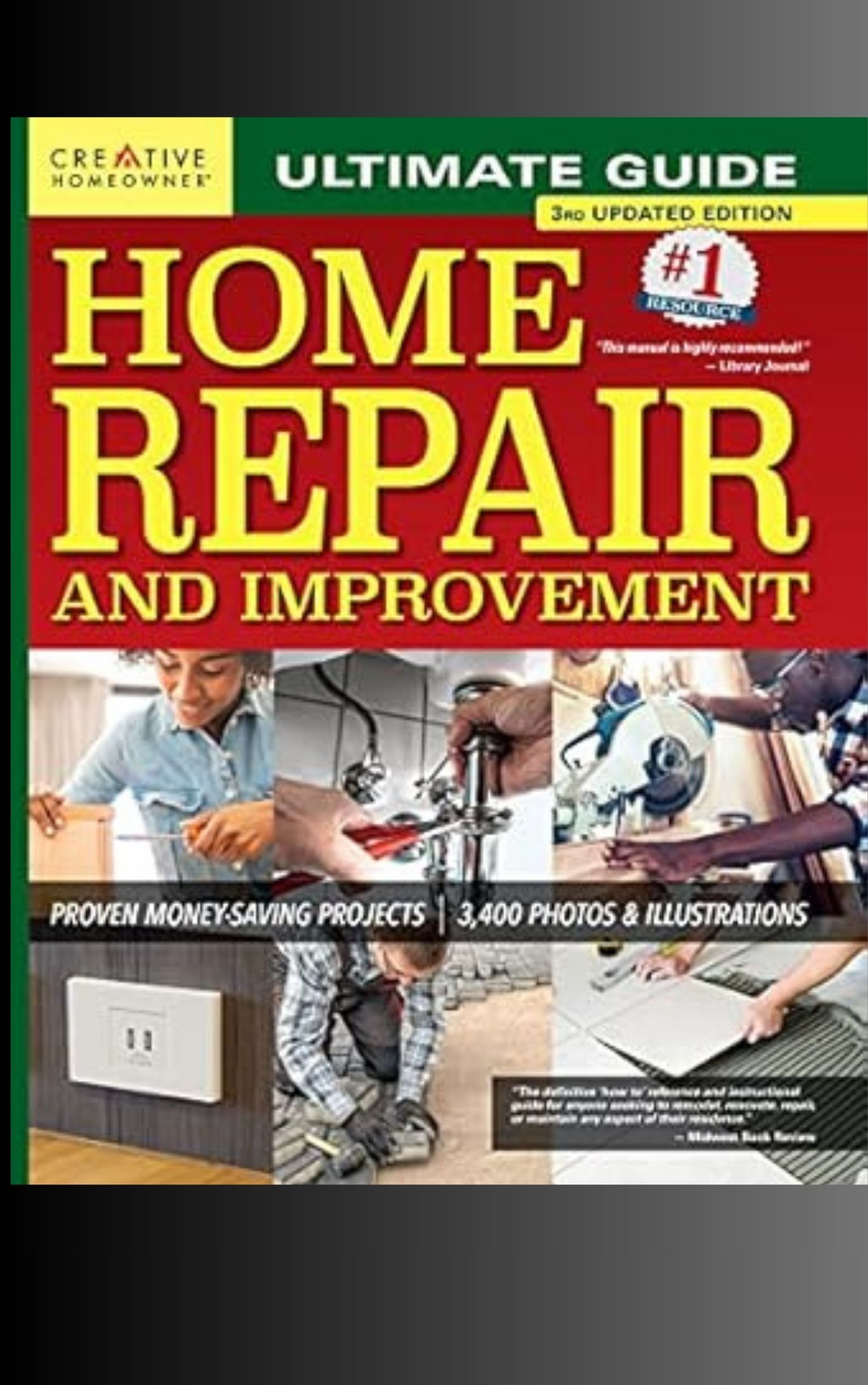Planning for temporary housing during major renovations requires careful assessment of your needs and options. Start by determining project duration, household requirements, and essential amenities. Explore accommodation choices like extended-stay hotels, vacation rentals, or corporate housing. Create a realistic budget by estimating costs, including potential delays and additional expenses. Time your move strategically, aligning with renovation phases and considering seasonal factors. Maximize your temporary living experience by establishing routines and exploring your new surroundings. By thoroughly evaluating your situation and planning accordingly, you can ensure a smoother transition during your home renovation project. The following sections provide deeper insights into each aspect of this process.
Assessing Your Temporary Housing Needs

Renovation projects often necessitate temporary relocation, making it crucial to assess your housing needs accurately. Begin by determining the duration of your renovation project, factoring in potential delays.
Consider the size of your household and any specific requirements, such as accessibility for elderly family members or pet-friendly accommodations. Evaluate your daily routines and proximity needs to work, schools, or other essential locations. Determine if you require a fully furnished space or if you can bring some of your own belongings.
Consider the amenities you'll need, such as a kitchen for meal preparation or laundry facilities. Assess your storage needs for items that can't remain in your home during renovations. Take into account your budget constraints and explore various housing options, including short-term rentals, extended-stay hotels, or staying with family or friends.
Consider the impact on your commute and transportation costs. Lastly, factor in any seasonal considerations, such as peak tourist seasons or academic calendars, which may affect availability and pricing of temporary accommodations. By thoroughly assessing these aspects, you can make informed decisions about your temporary housing needs during renovations.
Exploring Short-Term Accommodation Options
When it comes to finding temporary housing during renovations, numerous short-term accommodation options are available to suit various needs and budgets. Hotels and motels offer convenience and amenities but can be costly for extended stays.
Extended-stay hotels provide a more home-like environment with kitchenettes and larger living spaces, often at lower rates than traditional hotels.
Vacation rentals, such as those found on platforms like Airbnb or VRBO, can be ideal for families or those seeking a more residential experience. These properties often come fully furnished and equipped with household essentials.
Corporate housing is another option, typically offering furnished apartments or homes for stays of 30 days or more.
For those on a tighter budget, house-sitting or home-exchange programs can provide free or low-cost accommodations. Additionally, staying with friends or family members may be a viable option for some.
RV rentals or campgrounds can offer a unique and potentially cost-effective solution for those comfortable with a more adventurous living arrangement.
Consider factors such as location, amenities, and lease terms when evaluating these options to find the best fit for your specific situation and renovation timeline.
Creating a Realistic Housing Budget

A realistic housing budget is essential for managing expenses during major renovations. Begin by estimating the duration of your temporary housing needs, factoring in potential delays. Research average costs for your chosen accommodation type in the desired area, considering seasonal fluctuations. Include additional expenses such as utilities, parking, and internet if not included in the rental price.
Factor in transportation costs to work, school, or other frequent destinations from your temporary home. Don't forget to budget for storage fees if you need to store furniture or belongings during the renovation. Consider meal costs, especially if your temporary housing lacks full kitchen facilities.
Create a contingency fund of 10-15% to cover unexpected expenses or extended stays. Review your overall renovation budget to ensure temporary housing costs don't exceed your financial capacity. Consider cost-saving measures like negotiating long-term stay discounts, opting for less expensive neighborhoods, or exploring house-sitting opportunities.
Track your expenses diligently throughout the process, adjusting your budget as necessary. By creating a comprehensive and flexible budget, you'll be better prepared to manage the financial aspects of temporary housing during your renovation project.
Timing Your Move Strategically
Strategic timing of your move is crucial for minimizing disruption and maximizing efficiency during major renovations. Consider the renovation timeline and coordinate your move accordingly. Ideally, plan to vacate your home just before major work begins, allowing contractors unrestricted access to the property.
Assess the project's phases and determine if there are any periods when you could potentially return home temporarily. This approach may help reduce overall temporary housing costs. Additionally, factor in seasonal considerations. Moving during peak seasons can be more expensive and challenging, so aim for off-peak times if possible.
Communicate regularly with your contractor to stay informed about any schedule changes. Be prepared to adjust your move-out and move-in dates if necessary. Consider buffer time on both ends of the renovation to account for unexpected delays or last-minute touch-ups.
If you're renting temporary housing, negotiate flexible lease terms that align with your renovation timeline. This may include month-to-month options or the ability to extend your stay if needed. By strategically timing your move, you can minimize stress and financial impact while ensuring a smooth renovation process.
Maximizing Your Temporary Living Experience

While strategic timing sets the stage for a smooth renovation process, making the most of your temporary living situation can greatly impact your overall experience. To maximize your time in temporary housing, focus on organization and adaptability. Create a system for storing and accessing essential items, and establish routines that maintain a sense of normalcy for you and your family.
Take advantage of the opportunity to explore your temporary neighborhood, trying new restaurants or recreational activities. This can help alleviate stress and provide a refreshing change of pace. If possible, choose temporary housing that offers amenities aligned with your lifestyle, such as a fitness center or shared workspace.
Maintain open communication with your renovation team to stay informed about progress and potential delays. This awareness allows you to adjust your temporary living arrangements if necessary. Consider using this time to declutter and reassess your belongings, making decisions about what to keep, donate, or discard before moving back into your renovated space.
Lastly, embrace the temporary nature of your living situation by viewing it as an adventure rather than an inconvenience. This mindset can help you navigate challenges more easily and potentially discover new perspectives on your living preferences.
Frequently Asked Questions
How Can I Maintain a Sense of Normalcy for My Children During Temporary Relocation?
To maintain normalcy for children during temporary relocation, establish routines, keep familiar items accessible, maintain regular schedules, continue extracurricular activities, and communicate openly about the situation. Create a comfortable living space and involve them in decorating their new rooms.
What Insurance Considerations Should I Keep in Mind for Temporary Housing?
When considering insurance for temporary housing, ensure your existing homeowners policy covers relocation expenses. Verify coverage limits, document belongings, and consider additional riders for valuable items. Consult your insurance agent for specific recommendations tailored to your situation.
How Do I Handle Mail and Package Deliveries While in Temporary Accommodation?
Amidst the chaos of relocation, mail management remains crucial. Arrange mail forwarding with your postal service, utilize package lockers or a trusted neighbor for deliveries, and consider a virtual mailbox service for seamless handling of correspondence.
Are There Tax Implications Associated With Temporary Housing During Home Renovations?
There may be tax implications for temporary housing during renovations. Consult a tax professional to determine if expenses are deductible. Some costs might qualify as home improvement expenses, potentially impacting your property's tax basis upon sale.
How Can I Ensure the Security of My Renovated Property While Living Elsewhere?
To ensure your renovated property's security while living elsewhere, install a robust security system, use smart home devices, hire a reputable house-sitter, maintain regular property checks, secure all entry points, and inform trusted neighbors of your situation.
Conclusion
Planning for temporary housing during major renovations requires careful consideration of needs, options, and budget constraints. But what happens when the unexpected occurs? A well-crafted strategy ensures minimal disruption to daily life while maintaining financial stability. By assessing requirements, exploring diverse accommodation choices, budgeting realistically, timing the move strategically, and optimizing the temporary living situation, homeowners can navigate this transitional period with reduced stress. Ultimately, thorough preparation facilitates a smoother renovation process and a more comfortable interim living arrangement.

